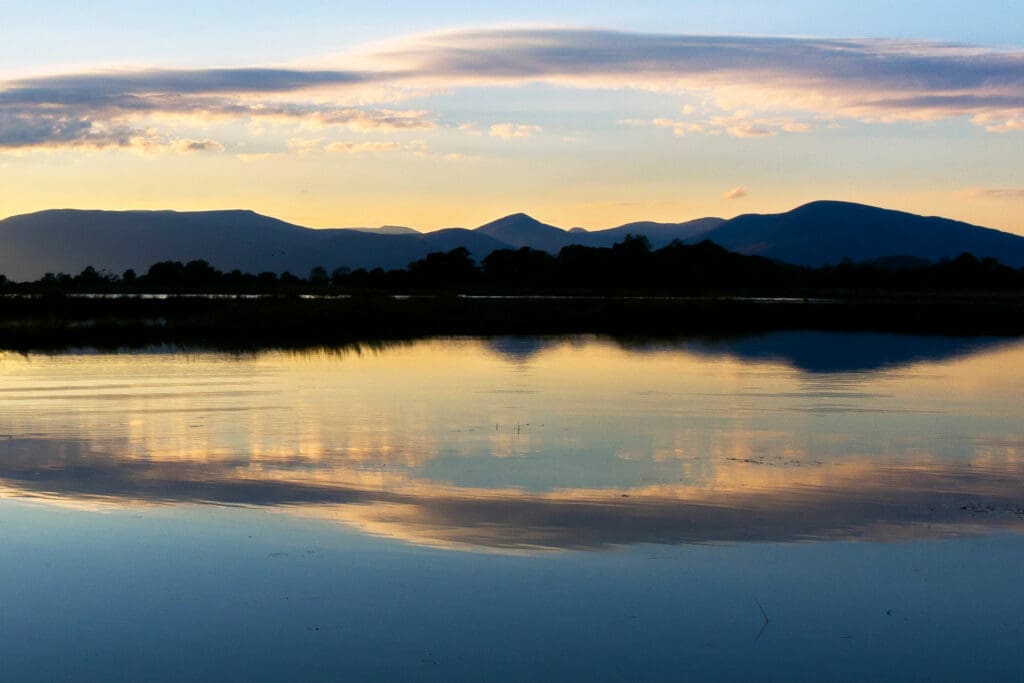Freshwater
Otters, RSPB Loch Spynie
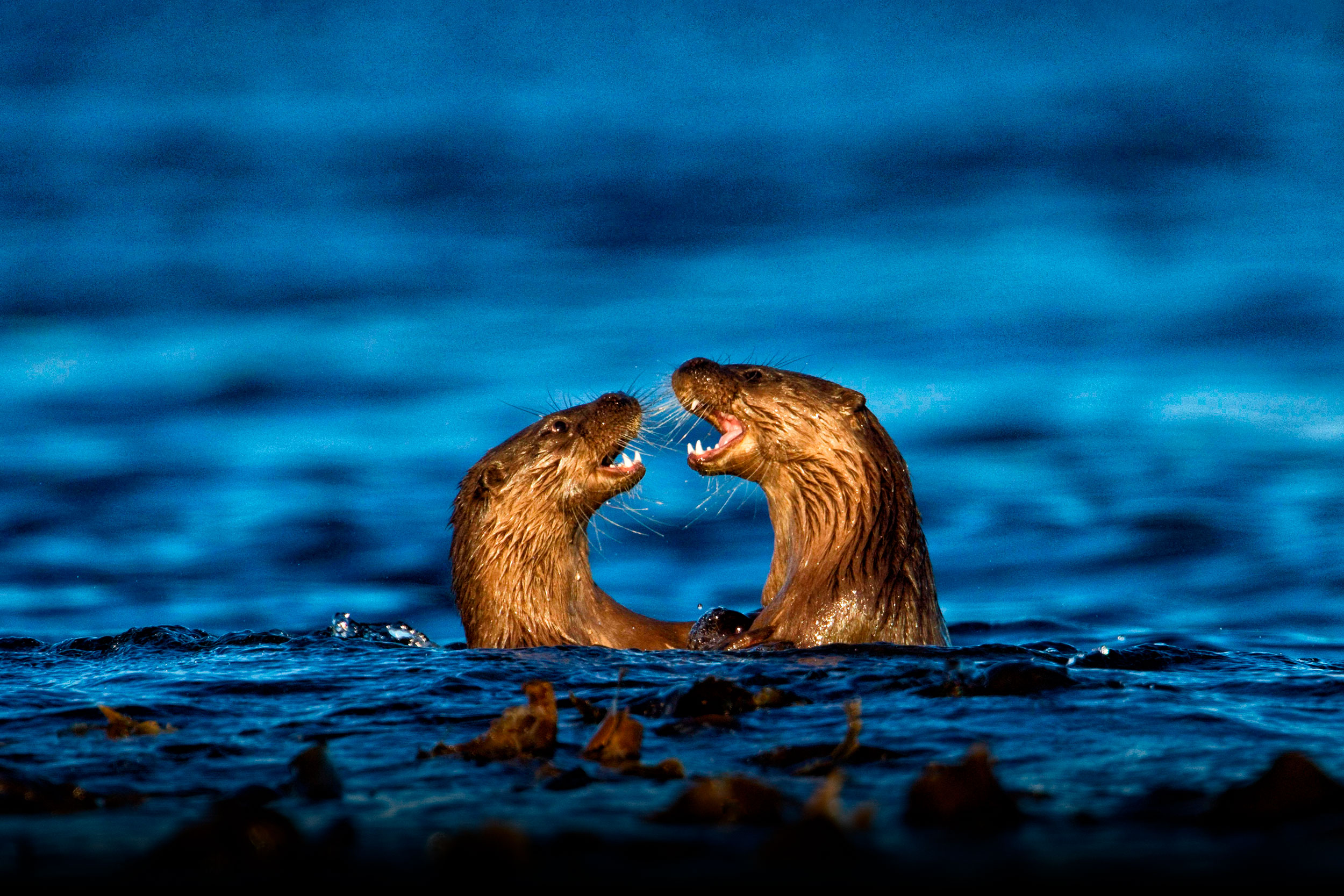
Otters. Photo: imageBROKER.com GmbH & Co. KG (Alamy Stock Photo)
It’s pretty chilly, but the view from this loch-edge hide in northern Scotland is already warming my heart. Having watched the entertaining antics of a Red Squirrel at the feeders, leaping to and fro amid the pines, I’m now gazing out of the hide windows at a bright winter scene of drifting Whooper Swans, Wigeon, Teal and a few Goldeneyes and Pintails. There’s a disturbance at the water’s edge, near a clump of golden reeds along the far shore.
A dark, glossy shape surfaces and I raise my binoculars in time to see the head of an Otter, which casts a quick look around, spinning in the water and sending ripples out that alarm the wary ducks, before raising a forepaw as if in salute and disappearing beneath the silver water.
I’m now a Loch Spynie Otter Spotter – a badge I’ll wear with pride.
Getting there: Elgin train station is just under 4 miles away. There are taxis, or a pleasant walk or cycle along back roads.
Oceans
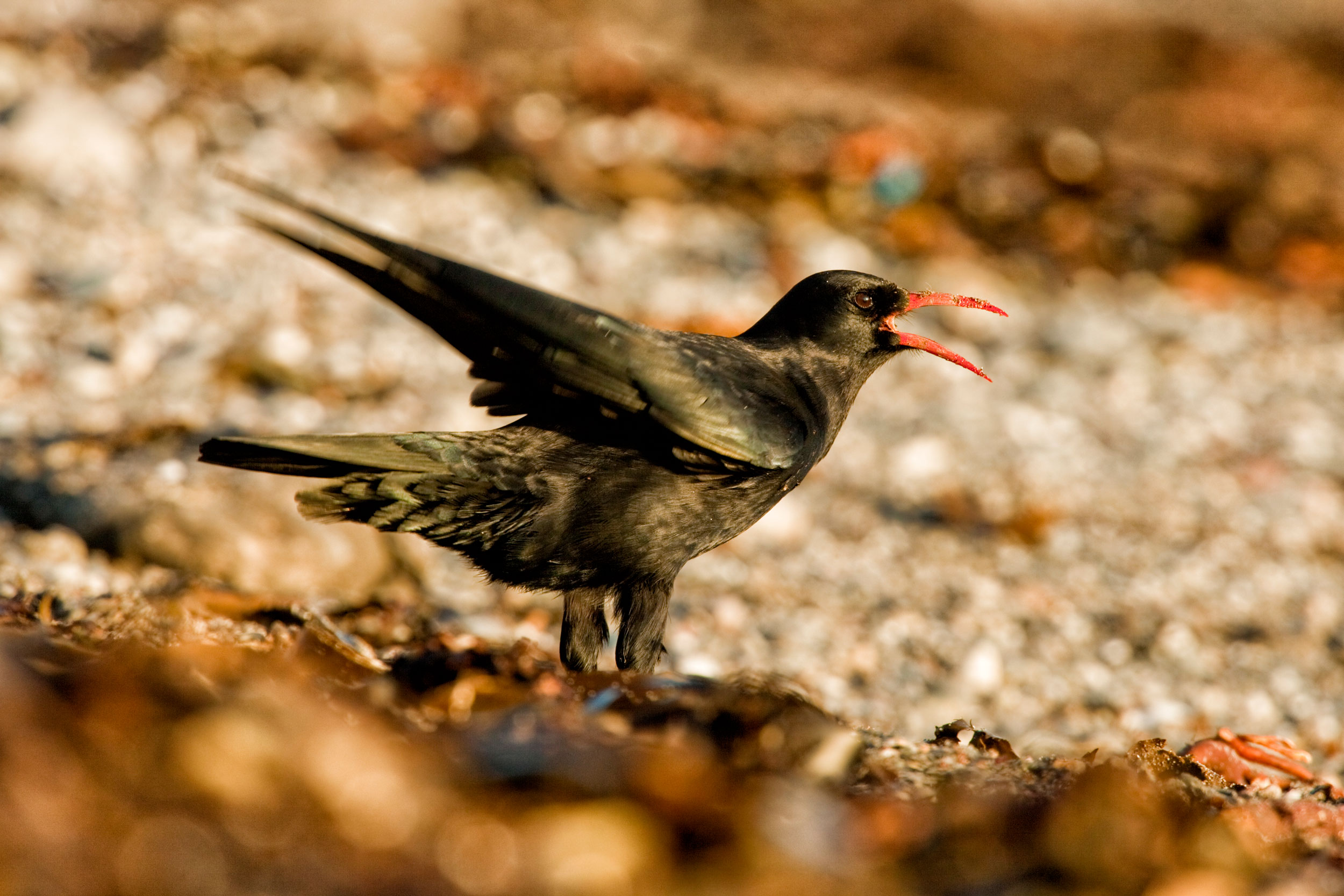
Red-billed Chough. Photo: David Slater (rspb-images.com)
This windswept promontory rises from Atlantic swells, soaring granite cliffs linked by a little footbridge that’s humanity’s only access to a remote, atmospheric world ruled by birds. Come spring, it’ll teem with cacophonous breeding seabirds. For now, the cliff air belongs to the Ravens and Choughs. The Ravens are huge, impressive birds – performing daring acrobatics along the cliffs, looping and free-falling in small groups over land, then ocean. It looks a lot of fun.
“Chough!”, someone exclaims nearby. A much smaller black crow shape rises above the cliff edge, unmistakable scarlet legs dangling in the wind. It’s soon joined by another and the pair of lifelong mates settle on the grass near the picnic benches, eyeing me with intelligent wariness. I withdraw to give them some space to forage. This is their kingdom, not mine.
Getting there: Holyhead station is 3 miles away.
Woodland
Robins and Wild Boar, RSPB Nagshead
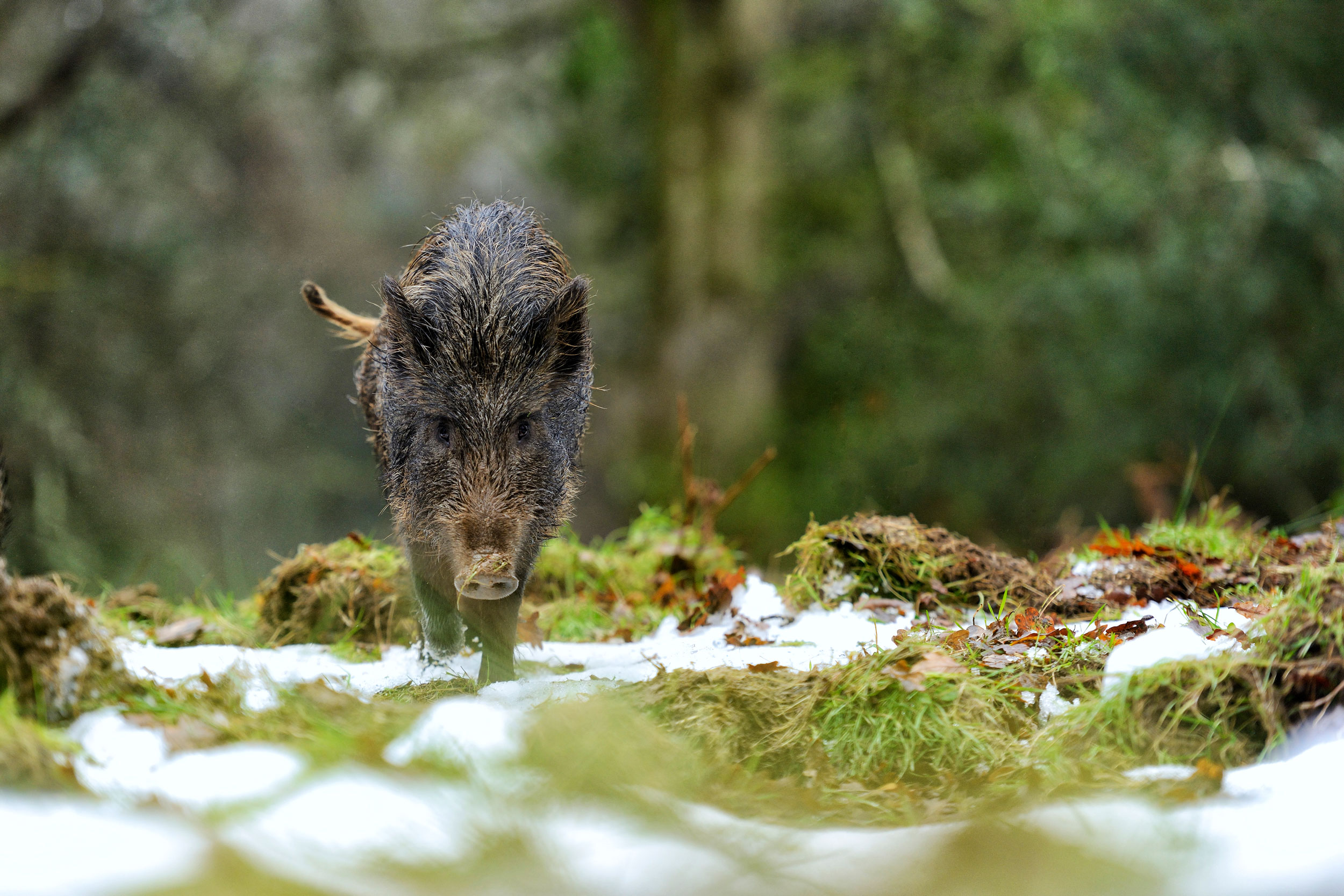
Wild Boar. Photo: Ben Andrew (rspb-images.com)
Dusk falls early this time of year, and the forest in the wintry gloaming takes on an eerie feel. Old magic hangs in the air.
I look around me but feel like I’m the one being watched. There are clues everywhere that I’m not alone: a trampled wallow churned into the mud, the faint impression of trotters in the little pathways. I’m certain they know I’m here. If I had better eyesight perhaps I’d spot a tufted back, motionless amid that bronze bracken.
I focus instead on the birds, keeping an eye out for Treecreepers amid the endless forest of bare oaks. A flash of colour alerts me to a Robin snatching berries from a Holly tree, which perhaps accounts for the deep hue of his chest.
I stand still, my breath curling in the tranquil February air and mingling with the Robin’s.
Getting there: The nearest station is 3.75 miles away at Lydney, with a bus taking you a short walk from the site. The Forest of Dean Family Cycle Trail runs past RSPB Nagshead.
Robins and Wild Boar, RSPB Nags-head. Video: RSPB Nagshead
Grasslands
Irish Hare. RSPB Portmore Lough
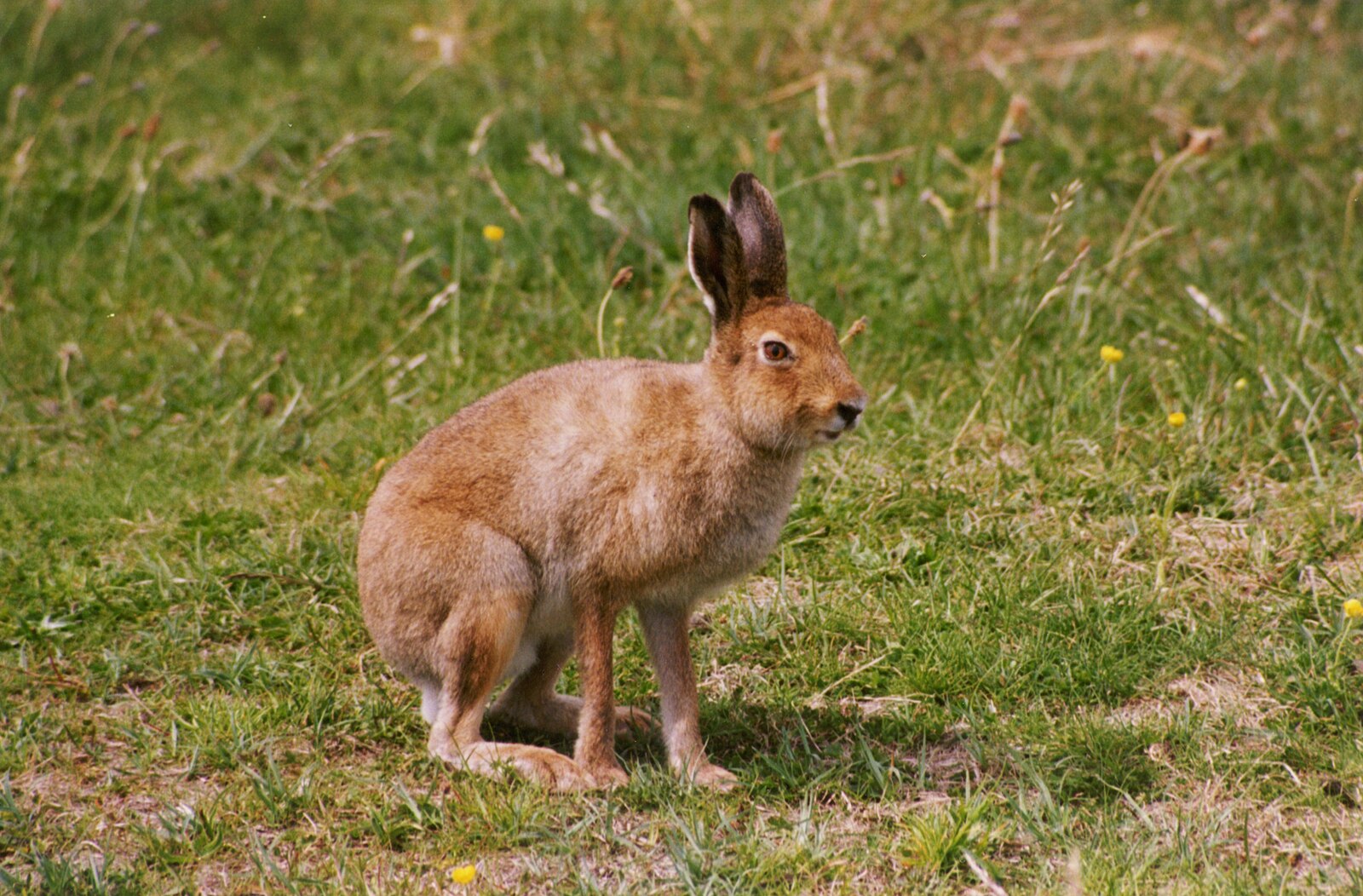
Female Irish Mountain Hare. Photo: Wikimedia Commons
Morning frost sparkles on the fringes of the shallow pools that have flooded the wet grassland, as they do every winter when the rising lough seeps through the reedbeds and into the meadows. Small flocks of Lapwings and Golden Plovers assemble around the fringes. In the distance, there’s a commotion. Two hares boxing, up on their hind legs kicking, striking and circling. These are Portmore Lough’s precious Irish Hares; a distinct endemic sub-species that’s rare across the whole of Ireland, but thriving here.
At least, one of them is. The other is now on the retreat and his progress is starting to trend downwards and backwards. The female is larger and has clearly had enough of the smaller male’s propositions. He thinks better of it and races away. Perhaps one day they’ll have leverets nestling in this meadow, but today was not his lucky day.
Getting there: There’s no regular public transport, but if coming by road, enter postcode BT67 0DW into the sat nav.
Listen to this feature here:
You might also like
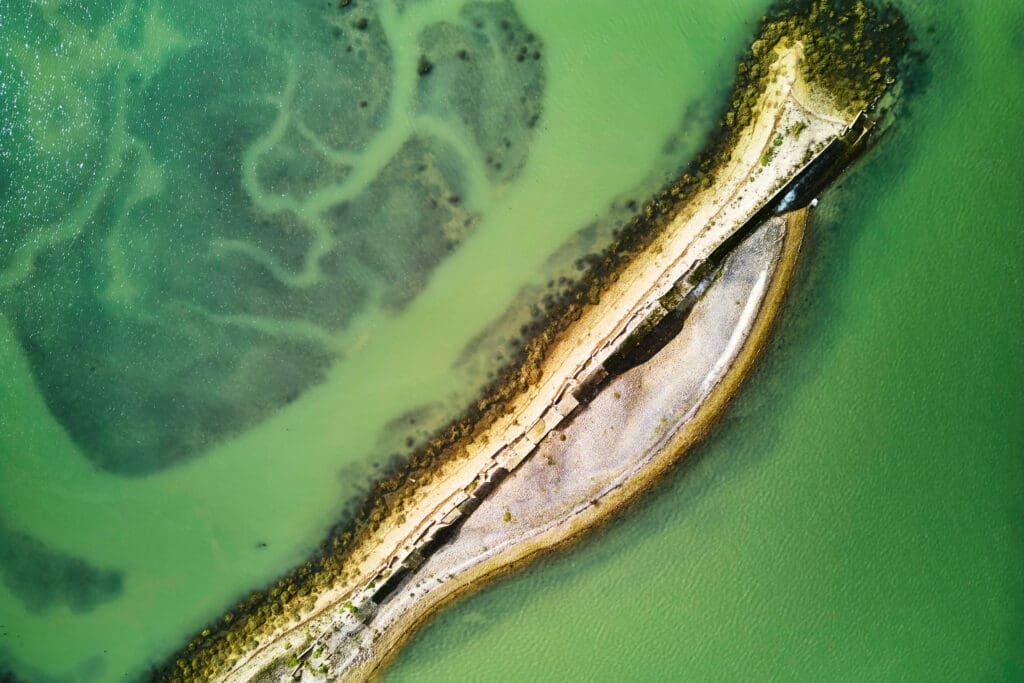
Medmerry & Pagham Harbour
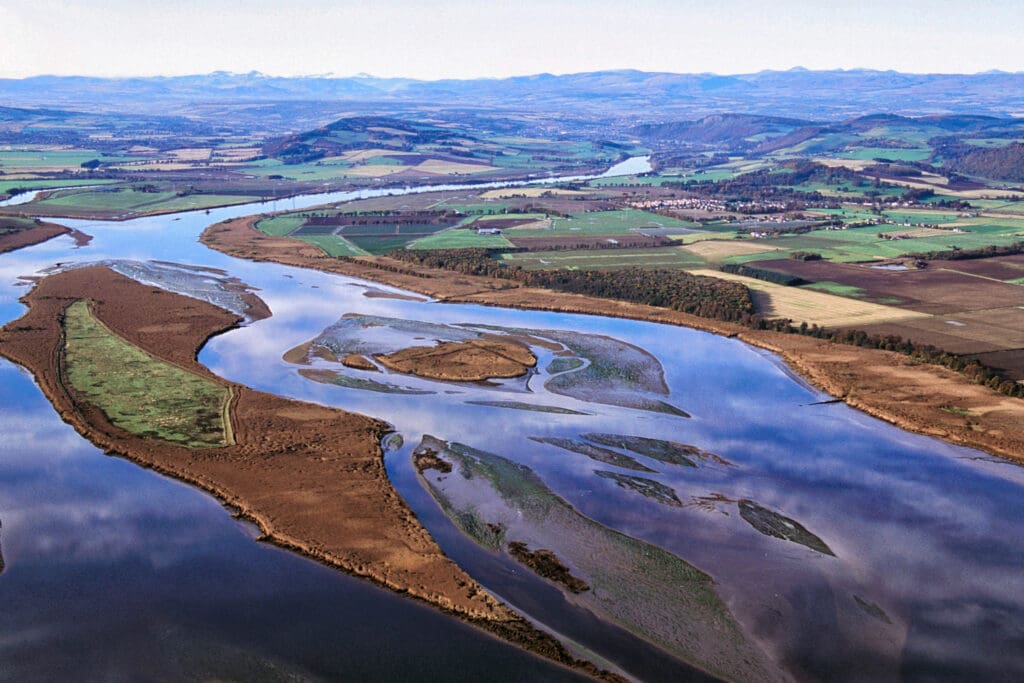
3 nature reserves to explore in winter/spring
